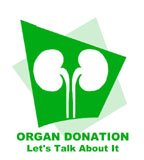Get a gift of life from cadavers
Published in the Times of India
[ 13 Aug, 2006 0233hrs ISTTIMES NEWS NETWORK ]
NEW DELHI: It's supposed to be the best line of treatment for many diseases. And often, the only one for fatally-ill patients suffering from renal or liver failure. Yet, in India, cadaveric organ donation is not popular.
Brain stem dead patients becoming donors is as low as 17%. Compare that with 50% in the US and 75% in Europe. This has lead to a critical shortage of organs. What not many of us know is that after natural death only a few tissues can be donated, while after a brain stem one, almost 37 organs and tissues can be given way.
"Annually, around 100 cadaver transplants take place in India. That's about .01 per million population. Italy has the highest with 35 per million people," says Sunil Shroff of Multi Organ Harvesting Aid Network, Chennai (MOHAN).
"The figure is abysmally low for a country with thousands of brain stem deaths every year," says Vishwanath Billa, nephrologist and kidney transplant physician, Bombay Hospital & Medical Research Centre.
The first successful cadaver kidney transplant in India was done at KEM Hospital, Mumbai, way back in 1967. "Before convincing one family to donate, doctors had to go through some 100 failures," he says. He himself has done only three or four cadaveric transplants since ‘97 when he joined the hospital.
Pan-India studies done by MOHAN show 72% cadaver transplants are for corneas, while only 47% are for organs. In the US, in 2004, the number of cadaver donors grew by 11%. It was the largest annual increase in a decade.
In 2005, the number of kidneys transplanted from cadavers was 9,914, while those from live donors was 6,563. "Cadaveric transplants are higher there as people are more aware and willing," says A K Bhalla, secretary, Delhi Nephrology Society.
Indians, are very emotional about the dead. As I K Dhawan, former professor, general surgery, AIIMS says, "We are more attached to a dead body than a live one." Also, there's lack of awareness among doctors and patients. Even people with donor cards ultimately can't donate as families are unwilling.
In fact, families of brain stem dead patients hope they'll recover ultimately. "But there's a difference," says Billa. "A brain dead person can revive even after 20 years as his vital organs are functioning.
A brain stem, on the other hand, is a bunch of nerves connecting the brain to the spinal cord and other organs. If this is damaged, chances of recovery are nil. Organs from only these patients are used for transplanting," he says.
Experts say the Transplantation of Human Organs Act passed in 1994 stipulates two set of tests be done by neurologists six hours apart before transplanting an organ.
And most important, the patient's family has to agree. And no money can change hands. "Unfortunately, 99% families don't agree for the donation in India," says Dhawan. Until 1997, only four Indian hospitals were doing such surgeries.
Link: http://timesofindia.indiatimes.com/articleshow/1889160.cms


0 Comments:
Post a Comment
<< Home